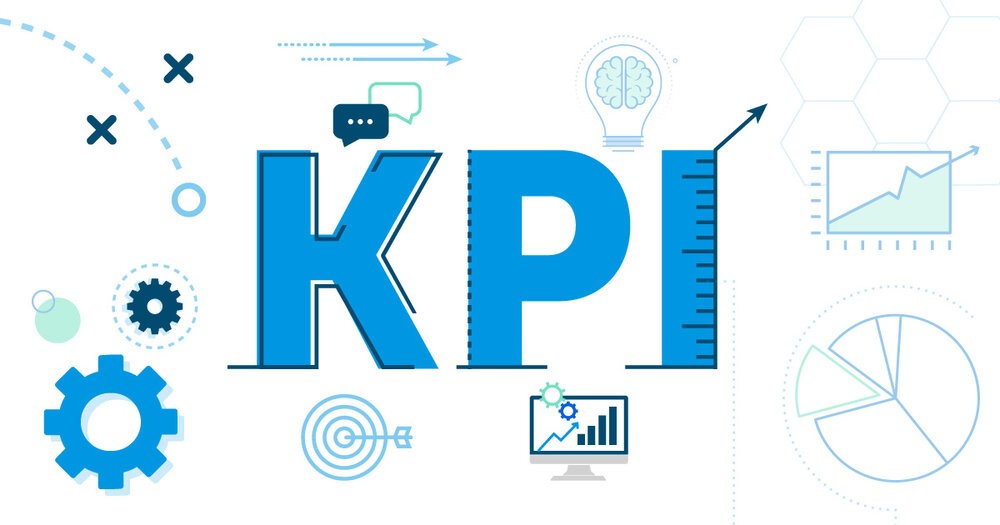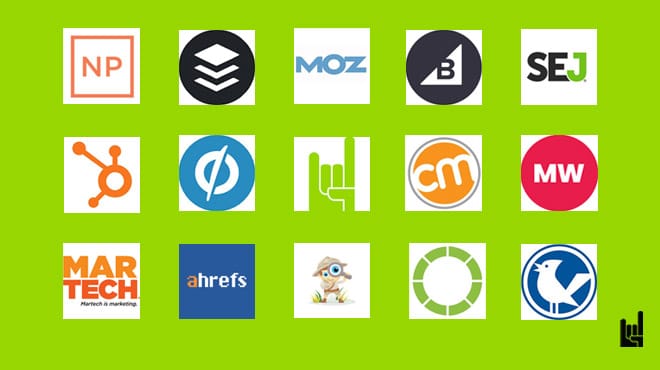You may not be able to see who picked up the classifieds or drove by the billboard. But with digital efforts, you can measure just about anything.
But numbers alone aren’t going to provide you with a big picture solution. That’s where goal-setting with KPIs comes in. So, let’s get to the bottom of KPIs, so you can get started measuring.
What is a KPI?
A KPI goes hand-in-hand with any digital marketing campaign. It seems as if no matter how often we hear about KPIs, the definition can get lost.
To break it down, an indicator is any measurable tool that provides a perspective on how actions are moving toward a goal. An indicator can help a person or a team make sense of collected data by turning it into digestible information.
So, KPIs are the top indicators that you’d consider to evaluate the success of a marketing campaign and make decisions about the next steps.
There are different types of KPIs to consider:
- Quantitative KPIs measure numbers. For example, the number of new visitors to your website, the revenue generated per product, or the number of orders completed.
- Qualitative KPIs measure items without a number. This could be messages gathered in a chatbot conversation with a website visitor.
KPIs can also be categorized by how they’re managed:
- Low-level KPIs are closely monitored on a daily, weekly, or monthly basis. These could be related to advertising or social media engagement.
- High-Level KPIs are indicators that are discussed and presented during company meetings and among executives. They are most likely reviewed on a quarterly or twice-a-year basis. For example, search engine rankings or conversion rates.

When considering KPIs, see if you can answer “yes” to all of these questions:
- Measurable: Can the goal be measured?
- Specific: Is the goal specific enough that everyone knows what needs to be done?
- Assignable: Is at least one individual or a team accountable for its success?
- Time-bound: Is there a specific timeline for reaching the goal?
- Realistic: Can the KPI be realistically achieved?
Next, let’s take a look at the importance of eCommerce KPIs and how to determine ones for your business.
How Do You Determine Which KPIs to Use for Your Online Store?
KPIs are vital to eCommerce. They are what allow stakeholders to measure how all of the parts of the customer journey are working.
Of course, determining what KPIs to look at is the first step. Then, you have to look at them and see if you reached your goals. From there, you have to decide what to do next.
Now that we know KPIs are essential for growing an eCommerce business, it’s time to determine which ones will help you see real growth.
This requires figuring out what you want to want to accomplish. In this case, it’s smart to begin with the end in mind.
By themselves, KPIs won’t give you the entire picture of how things are performing. That’s why it’s important to understand your goals before you worry about tracking numbers and percentages.
3 ECommerce KPIs You Need to Track
After you’ve outlined the goals you’re trying to reach, then it’s time to choose the specific KPIs you’ll measure.
Try to come up with three to seven eCommerce KPIs. If you have a list of KPIs that’s too long, it will be difficult to stay focused on monitoring them and making decisions about them.
However, you do want to look at more than just one KPI. You wouldn’t determine the success of your business based on website traffic for a single day. So, you want to look at a few KPIs to get the full picture.
1. Cost per acquisition
It’s helpful to know how much you’re spending on acquiring your customers. You want to ensure that you’re not launching a large campaign that only leads to a small group of customers.
To grow an eCommerce business, investing in paid search campaigns and other marketing efforts to drive traffic and increase sales is necessary. But no one wants the cost of the campaign to overrun the revenue it generates.
Calculate the customer acquisition cost by dividing the total cost spent on marketing and sales by the total number of customers those efforts brought.
For example, you spent $50,000 on your most recent marketing campaign. Throughout the duration of the campaign, you sold 175,000 units. So, $50,000 / 175,000 x 100 = $28.57.
According to this example, it costs $28.57 to get each new customer. Is this number good or bad? It all depends on your revenue. Let’s say each of your products delivers a revenue of $8,000. Then, an acquisition cost of $28.57 isn’t bad. If each of your products brings revenue of $17, then an acquisition cost that’s higher than that means you’re spending more than you’re earning.
Determining how much money you’re spending to make money is why this eCommerce KPI is so important.
2. Cart abandonment rate
Abandonment can be measured in two different ways: shopping cart abandonment and checkout abandonment.
Shopping cart abandonment calculates how many people put something in their cart and then leave the site without completing a purchase. Looking at the shopping cart abandonment rate can show you if there are glitches with the cart.
Checkout abandonment looks at the number of people that leave your site after starting the checkout process without making a purchase. The checkout abandonment rate could reflect an error in the checkout process. For example, maybe the forms for checking out are too lengthy, or you do not offer a popular payment method.

Calculate the shopping cart abandonment rate by dividing the total number of completed purchases by the total number of shopping carts that were started. To calculate the percentage, subtract the number from one and multiple it by 100.
For example, there are 2,500 completed purchases and 3,450 shopping carts created. 1 – [(2,500) / (3,450)] x 100 = 27.6%. The shopping cart abandonment rate is 27.6%.
According to Statista, more than 70% of online shopping orders were abandoned, with automotive being the industry with the highest cart abandonment rate.
What’s more, according to a survey from dontPayfull.com, 5% of shoppers will
always abandon the cart if they don’t find a coupon code.

A high cart abandonment rate usually indicates a poor user experience, a distorted purchase funnel, or a complicated checkout flow. So, optimizing user experience can definitely lower your cart abandonment rate.
Once you’ve figured out the reasons for the high abandonment rate, you can create an abandoned cart recovery strategy to bring people back to your site and proceed with their purchase.
This KPI is important because you’ll spend a lot of time, effort, and sometimes money to get people to visit your site.
3. Conversion rate
The eCommerce conversion rate shows the percentage of website visitors who purchased something from your online store during a set period of time.
To calculate the conversion rate, start with the total number of conversions. For example, this could be newsletter opens, sale purchases or ad clicks. Take this number, divide it by the number of visitors to your eCommerce store, and then multiply it by 100 for the percentage.
For example, let’s say you’re looking at email marketing data within your provider’s tool.
2,600 people opened the marketing email you sent. You sent 3,700 marketing emails. (2,600 / 3,700) x 100 = 70.27%.
In the second quarter of 2019, the conversion rate of U.S. online shoppers was 2.57%, according to Statista. This rate was down from 2.88% during the preceding quarter.
A conversion rate can be calculated for any KPI your company finds valuable. This could include email newsletter signups, social media shares, or someone adding an item to their cart.

The average conversion rate will be different for certain industries and times of the year, among other environmental influences. Generally speaking, average eCommerce conversion rates are between 1% – 2%.
Seasonality also plays a big factor here. For example, the home-care and mattress products tend to have a high conversion rate during Spring while school supplies and seasonal clothing will have their peak sales in their own time in the year.
In short, conversion rate is an important KPI because it leads to business growth.
Ecommerce KPIs – Conclusion
Choosing the right eCommerce KPIs is different for every business, and often, for every marketing campaign. No matter what, try to stay away from vanity metrics.
Keeping yourself familiar with useful eCommerce metrics will help you identify what data to look at and improve your strategy to grow your business. Be mindful that there are more KPIs than mentioned above. Look into customer experience analytics, average order value, and gross profit margin to gain more perspective on your business operations.

Leigh-Anne Truitt is a part of the SEO team at BigCommerce where she researches and discovers strategies to increase organic traffic. Prior to joining the ecommerce industry, Leigh-Anne perfected her marketing skills at The University of Texas at Austin and CanIRank.




One Response
Hi,
Those 3 KPIs are important. However, one should also check important KPIs like refund rate, social media channel conversion rate. We often keep track of those. Google tag manager and analytics really come in handy while monitoring such goals.